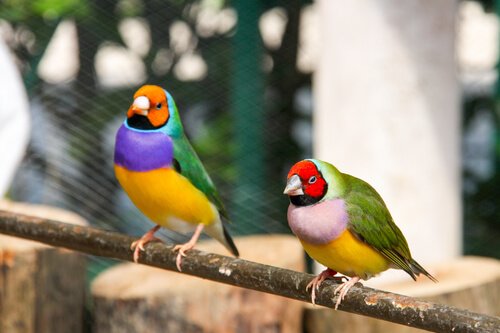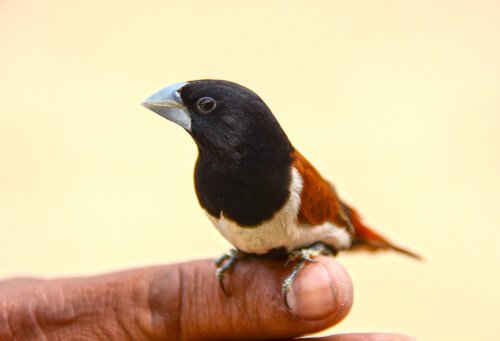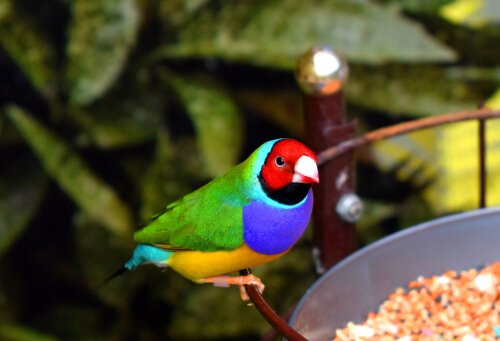Care and Maintenance for the Gouldian Finch

Gouldian Finch is one of the most popular exotic birds. Their harmonious colors are very eye-catching. People adopt them due to how great they look in their home.
They’re originally from Australia and they require special care when they’re kept as pets. Out in the wild, they like warm climates, preferably dry but with abundant water and vegetation.
There are also three subspecies of this tropical bird. They are a variation of colors, especially on their heads. Those that are domesticated can be even more varied if they are crossed with other birds of a different origin.
Domestic habitat: Gouldian Finch accommodations
Since these birds come from warm climate regions, it’s necessary to keep them in temperatures of at least 18-20 C. If these conditions, Gouldian Finches can spend their days both inside and outside of the home. Since they’ll want to fly, you can’t expect them to stay in one place.
Gouldian Finches enjoy the sun and fresh air. However, leaving their birdhouse in the sun in the summer or without any protection from the wind could be fatal. On the other hand, a closed interior space, with a lot of humidity or bad odors, would equally be just as harmful to the bird.
Importance of light
Gouldian Finches need light. These small animals must follow their annual cycle very strictly. Their resting periods, heat, breeding and shedding must take place without any interruption in order to protect these birds’ mental health. When they’re young, they need up to 14 hours of daylight.

The birdhouse
Due to these birds being very friendly and naturally sociable, it’s best to have two of them together in the home. Two birds of the same species will keep each other company. However, there are other species that can also coexist perfectly with Gouldian Finches.
In any case, the bird’s home should be wide enough for them to flap their wings. These birds need about one meter each to live comfortably in your home.
Horizontal birdhouses are better for Gouldian Finches than vertical ones. This is because the flight patterns of these birds are horizontal. You can use different levels of wooden pallets to decorate their birdhouse, which will also make it easier for them to play.
You shouldn’t place their feeders under the wooden pallets because then you’ll have to clean them more often. A clean birdhouse is very important for the Gouldian Finches’ wellbeing.
Gouldian Finches’ diet
Similar to how the amount of light they get must be regulated, you also have to regulate their food. These birds eat different foods or combinations of food, depending on what time of the year it is.
Their necessary amounts of carbohydrates, proteins or fats will vary between their rest periods and the time they breed. It’s also very important that your pet receives their necessary nutrients.

There are commercial birdseed mixes that provide a large part of the Gouldian Finches’ nutritional needs. To complement their diet, you can add several fruits and vegetables.
Since they’re insectivores, the best dessert for a Gould Finch are succulent worms. If they’re alive, that’s even better.
Another factor you take into consideration is their water. Gouldian Finches like water so much that they usually bathe in it. Water is very important for these animals so give them a deep dish of water to bathe in and a drinker with clean water in their cage.
Daily care for the Gouldian Finch
As with most birds, Gouldian Finches don’t like to be held in your hands. Even though they’re not fragile birds, holding them causes them a lot of stress. The less you try to hold him, the better.
In short, having a Gouldian Finch as a pet is a great responsibility. Due to being exotic animals, it will always be necessary to see a specialized professional in case they ever get sick.
